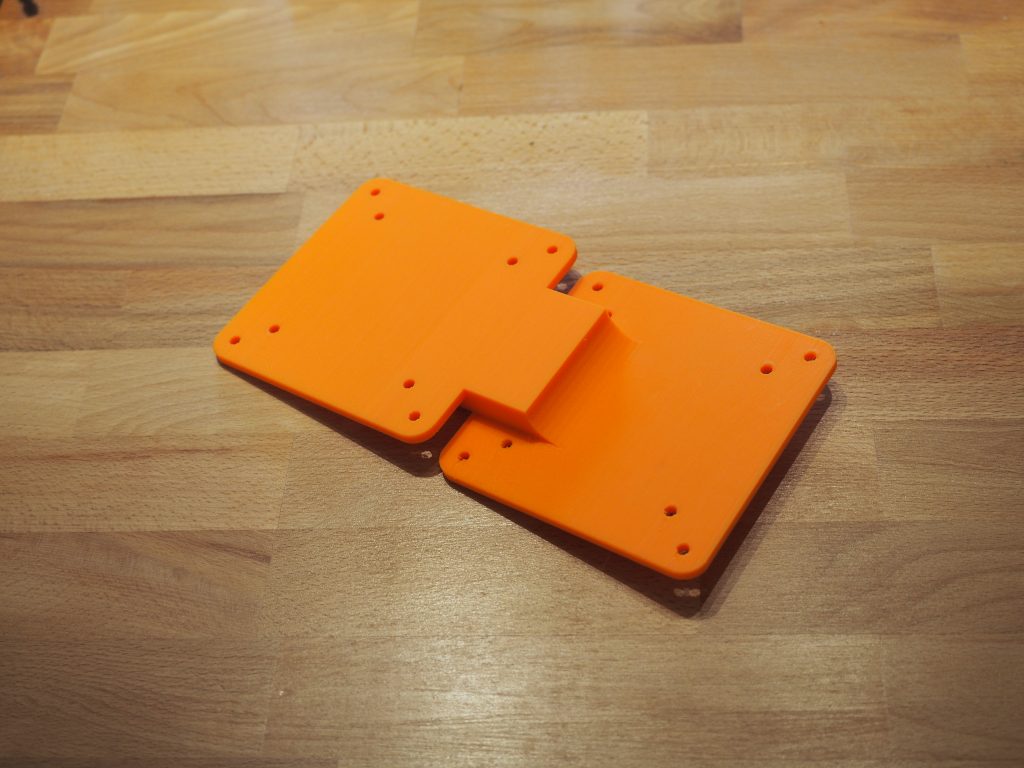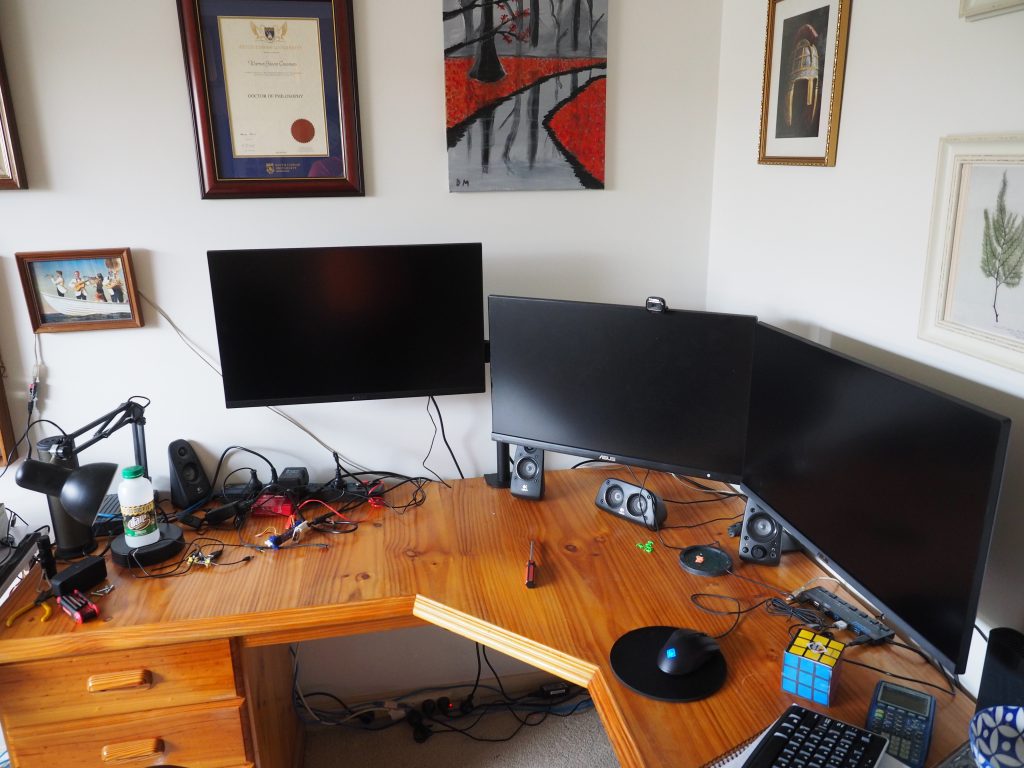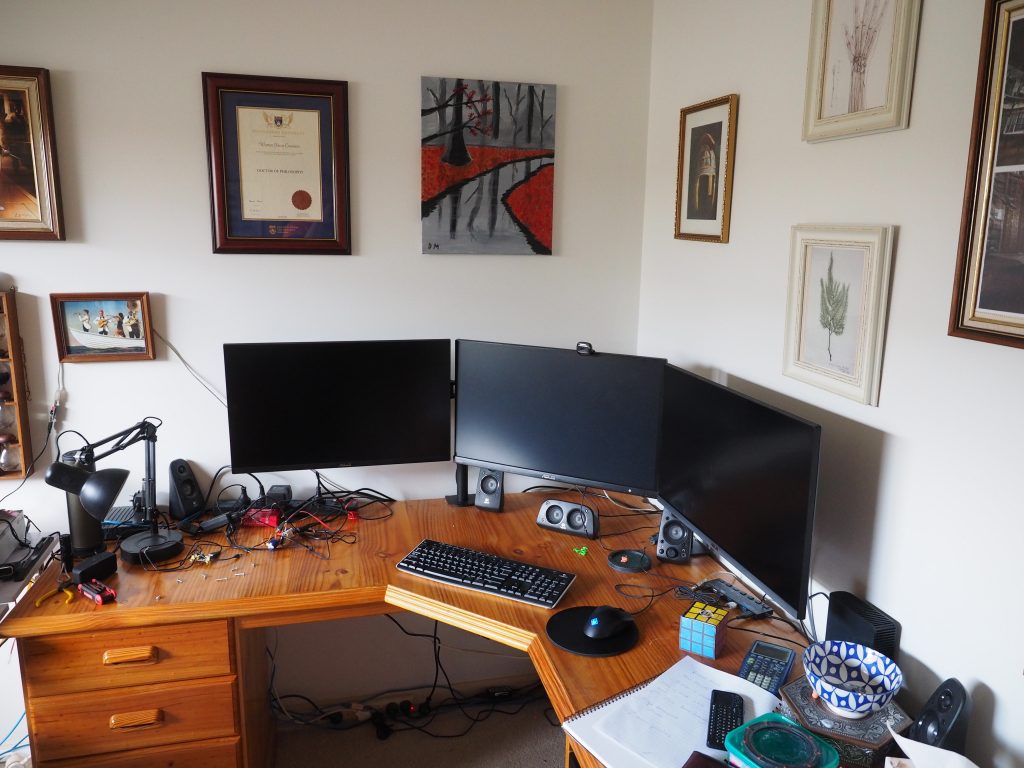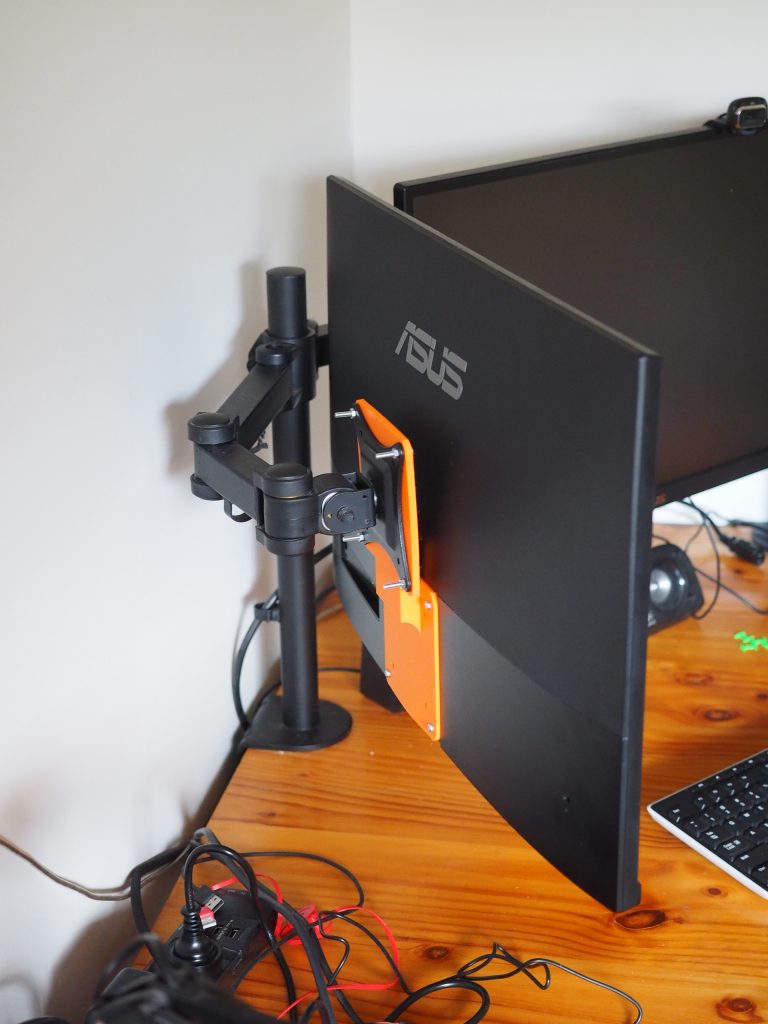
Recently I encountered a monitor that used a different mount positioning despite being only a few digits of in model number to its neighbour. The monitor needed to live with the other, sharing a horizontal mounting arm. I created an OpenSCAD mount to convert “lower mounted VESA”, to “central mounted VESA”.

VESA Mount Fixer (configurable)
You can download it via: https://www.thingiverse.com/thing:4300602
Background
Some manufactures put the VESA mount at the bottom of the screen, others in the middle. This can cause an issue for many situations, especially if monitors need to be used on a shared mount or in portrait mode.
Lets compare the pro’s cons of the mounting styles:
| Feature | VESA Middle |
VESA Bottom |
| Monitors line up nicely when sharing a mount. | Yes | No |
| Monitor is stable and does not roll violently on mount. | Yes | No |
| Monitor can be used in portrait mode without a rigid mount. | Yes | No |
| Monitor won’t drop forward overtime on an adjustable mount. | Yes | No |
| Mounting high on shop wall hides what is behind screen. | No | Yes |
| Monitor is cheaper to produce. | No | Yes |
The result for a shared mount was quite noticeable.

Before 
After
The plate which pokes out, should connect to the monitor. The other to the VESA mount (See below).

Customisation
The mount can be customised in OpenSCAD, or via the Thingverse customiser: https://www.thingiverse.com/apps/customizer/run?thing_id=4300602.

The following parameters should be altered to suit your need.
| Parameter | Values | Notes |
| correction | The distance to move the screen down. | |
| washer_size | Creates pockets for washers and bolts to sit flush in. Use zero to disable. | |
| connection_size | >=30 and <=100 |
The size by which the central column extends over the top of the VESA plate. Significant trade of between material use and strength. 30 produces a cheap print and holds light monitors. But 80 should be used for heavy displayed, or displays someone may pull downward on. |
| step | >=0 and <40ish |
Total recess size (depth) of the adapter. |
| thickness | > 1 and <=step |
Thickness of the VESA plate. This must be >= the depth of any pocket the vesa mount will sit in. Probably don’t go below 5 if 3D printing. |
